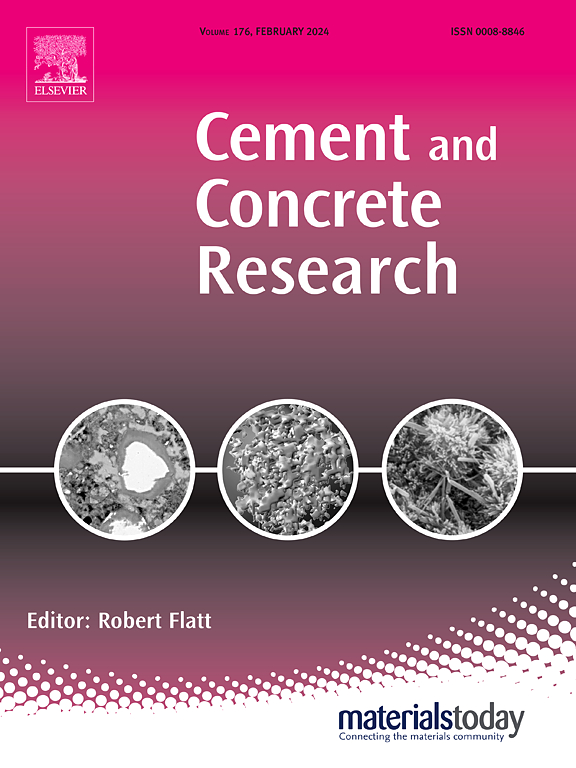斜沸石作为底物对水泥的碱促水化作用
IF 13.1
1区 工程技术
Q1 CONSTRUCTION & BUILDING TECHNOLOGY
引用次数: 0
摘要
斜沸石-钙沸石在硅酸盐水泥体系早期表现出有限的火山灰活性,导致初始水化和强度发展较慢。将ca型沸石转化为Na型或k型沸石,再加上通过处理沸石的pH工程提高混合体系的pH值,大大提高了其反应性。量热分析表明,na -或k型沸石能加速C₃S和C₃A的水化反应,其峰值强度更高,休眠时间更短,而硅酸盐分析表明,ca型沸石能抑制熟料反应。相分辨定量EDS证实了这些趋势,表明ca -沸石的水化反应迟缓,而na -沸石和k -沸石的硅酸盐和铝酸盐相反应促进,同时形成相对较多的AFm相。化学收缩和砂浆强度测量进一步支持了这些发现。值得注意的是,ph工程沸石将早期强度提高了10%,即使在20%的水泥替代下,7天砂浆强度仍保持不变,这凸显了它们作为可持续补充胶凝材料的潜力。本文章由计算机程序翻译,如有差异,请以英文原文为准。
Clinoptilolite zeolite as a substrate for alkali-boosting cement hydration
Clinoptilolite-Ca zeolite exhibited limited pozzolanic activity at early ages in portland cement systems, resulting in slower initial hydration and strength development. Conversion of Ca-zeolite to Na- or K-forms, combined with increasing the pH of the blended system through pH engineering of the treated zeolite, substantially enhanced its reactivity. Calorimetry revealed accelerated C₃S and C₃A hydration, with higher peak intensities and shorter dormancy periods for Na-or-K zeolites, whereas bulk portlandite analysis indicated that Ca-zeolite inhibits clinker reactions. Phase-resolved quantitative EDS confirmed these trends, showing retardation of hydration for Ca-zeolite and promotion of both silicate and aluminate phases reactions for Na-and K-zeolites, along with the formation of relatively higher amounts of AFm phases. Chemical shrinkage and mortar strength measurements further supported these findings. Notably, pH-engineered zeolites increased early-age strength by up to 10 %, with 7-days mortar strength remaining equivalent even at 20 % cement replacement, highlighting their potential as sustainable supplementary cementitious materials.
求助全文
通过发布文献求助,成功后即可免费获取论文全文。
去求助
来源期刊

Cement and Concrete Research
工程技术-材料科学:综合
CiteScore
20.90
自引率
12.30%
发文量
318
审稿时长
53 days
期刊介绍:
Cement and Concrete Research is dedicated to publishing top-notch research on the materials science and engineering of cement, cement composites, mortars, concrete, and related materials incorporating cement or other mineral binders. The journal prioritizes reporting significant findings in research on the properties and performance of cementitious materials. It also covers novel experimental techniques, the latest analytical and modeling methods, examination and diagnosis of actual cement and concrete structures, and the exploration of potential improvements in materials.
 求助内容:
求助内容: 应助结果提醒方式:
应助结果提醒方式:


